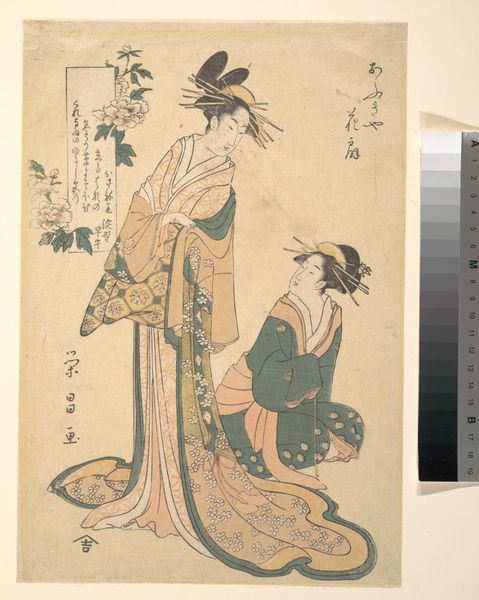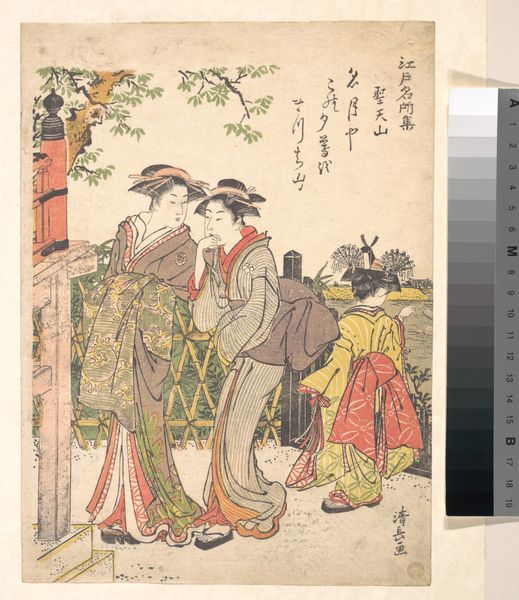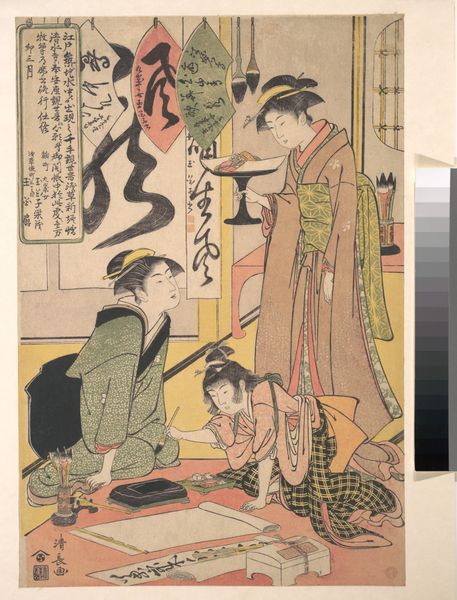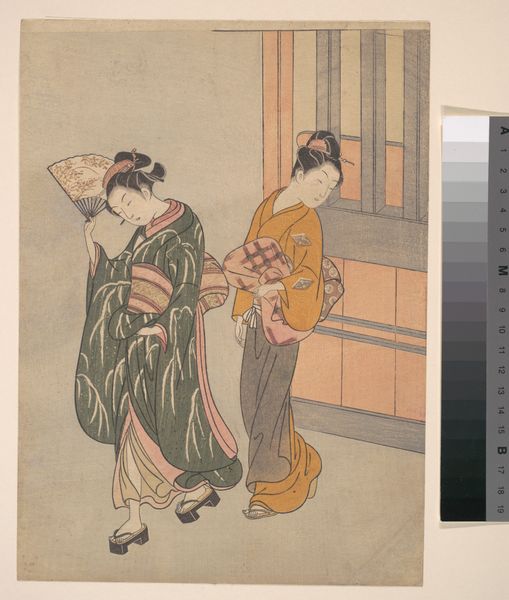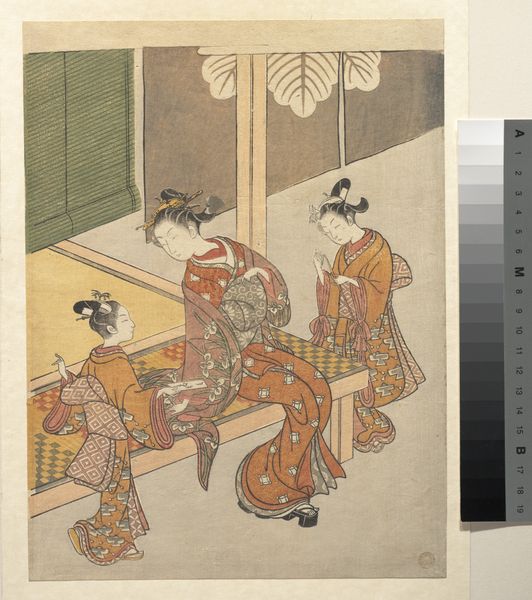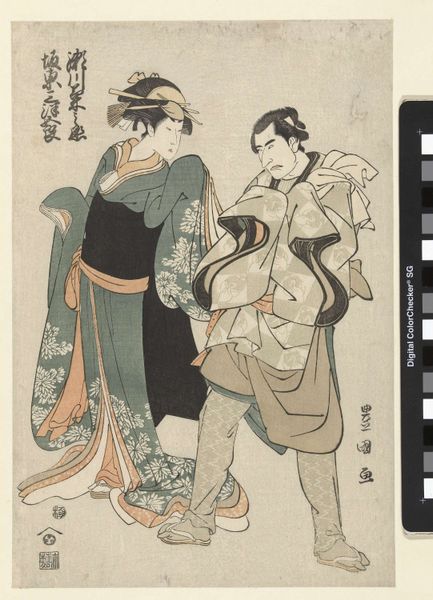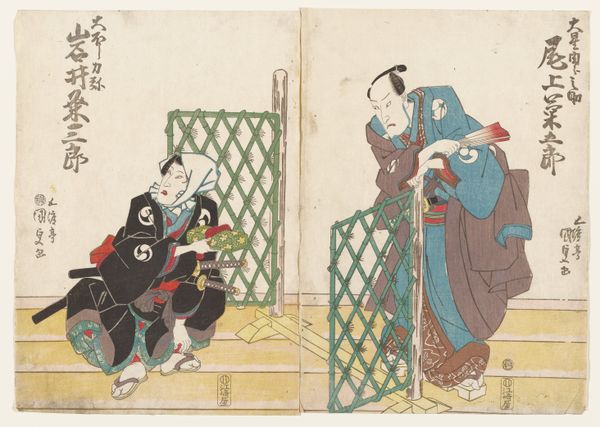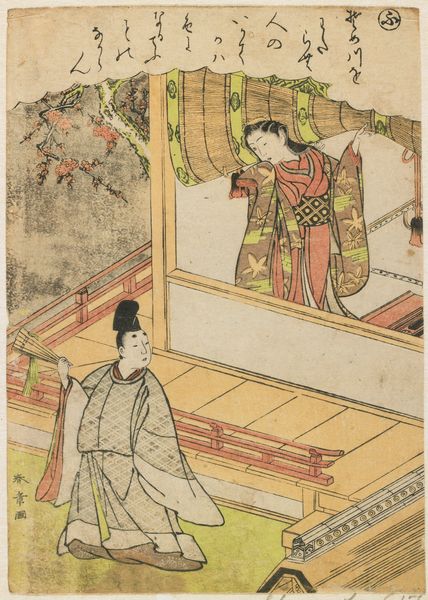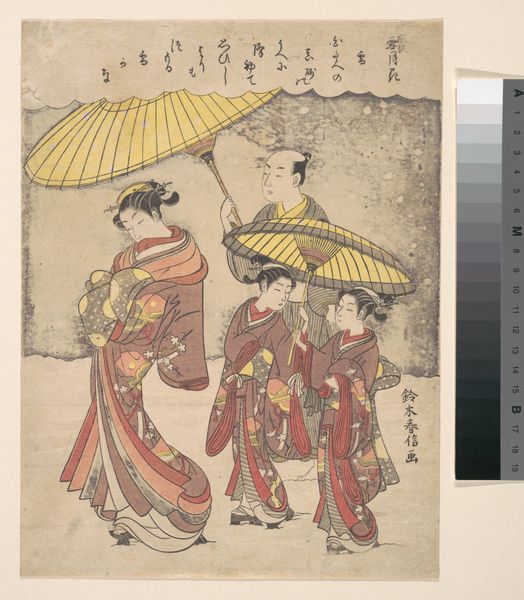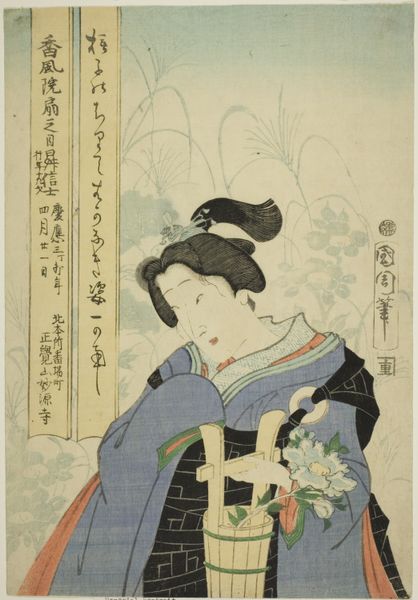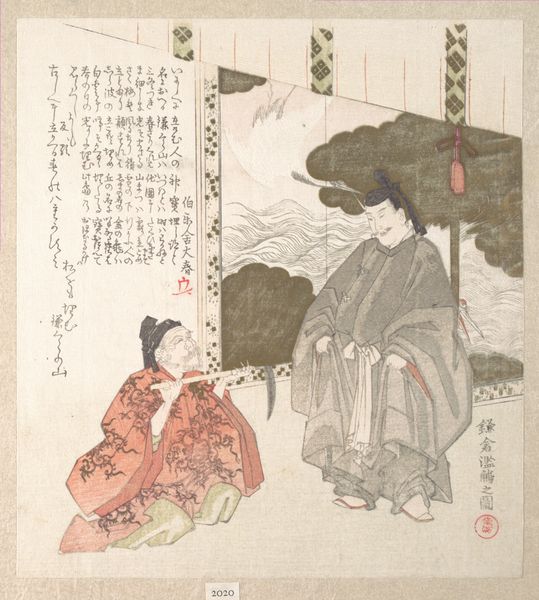
The First Day of Spring (Risshun), from the series Fashionable Poetic Immortals of the Four Seasons (Fūzoku shiki Kasen) 1778 - 1798
0:00
0:00
Dimensions: 11 x 8 1/4 in. (27.9 x 21 cm)
Copyright: Public Domain
Curator: Before us is "The First Day of Spring (Risshun), from the series Fashionable Poetic Immortals of the Four Seasons," a woodblock print created by Suzuki Harunobu sometime between 1778 and 1798. It’s currently housed at the Metropolitan Museum of Art. Editor: My immediate impression is one of serenity. There's a certain delicate stillness, an anticipation hanging in the air that feels intrinsically linked to the promise of spring. Curator: That’s a keen observation. Harunobu was known for his poetic sensibility and how he used seemingly simple scenes to reflect deeper cultural ideals. The title itself connects to “risshun,” which marks not only the start of spring but also a new cycle of life. Editor: I notice how the composition divides the space, with the woman kneeling on the engawa—a kind of veranda—and the other figure almost ghost-like through the shoji screen. Is that meant to evoke a symbolic division? A passing from winter into spring? Curator: Perhaps. The women's placement signifies different realms, with one firmly planted in the physical world and the other on the verge. It echoes the very essence of change that “risshun” represents within the agricultural and social calendars of the Edo period. Editor: I'm particularly drawn to the symbols integrated in their garments and in the background. The blossoms point towards themes of beauty and ephemeral existence. The woman kneeling with her finger raised, is that to communicate she is listening to something that only she can hear? Curator: It's possible. Consider how poetry, particularly linked to seasons, functioned as a form of social currency and expression. The scene also engages with 'yamato-e,' referencing a distinctly Japanese aesthetic emphasizing native sensitivities to landscapes and the nuances of emotion. Editor: What I find captivating about these types of prints is their layered understanding of temporality, the understanding that all seasons, situations, moods are connected to each other in an infinite cycle. It resonates even now. Curator: Indeed, Harunobu's ability to blend cultural memory with subtle portrayals of everyday life allowed him to capture enduring motifs and sentiments that continue to speak across centuries.
Comments
No comments
Be the first to comment and join the conversation on the ultimate creative platform.
